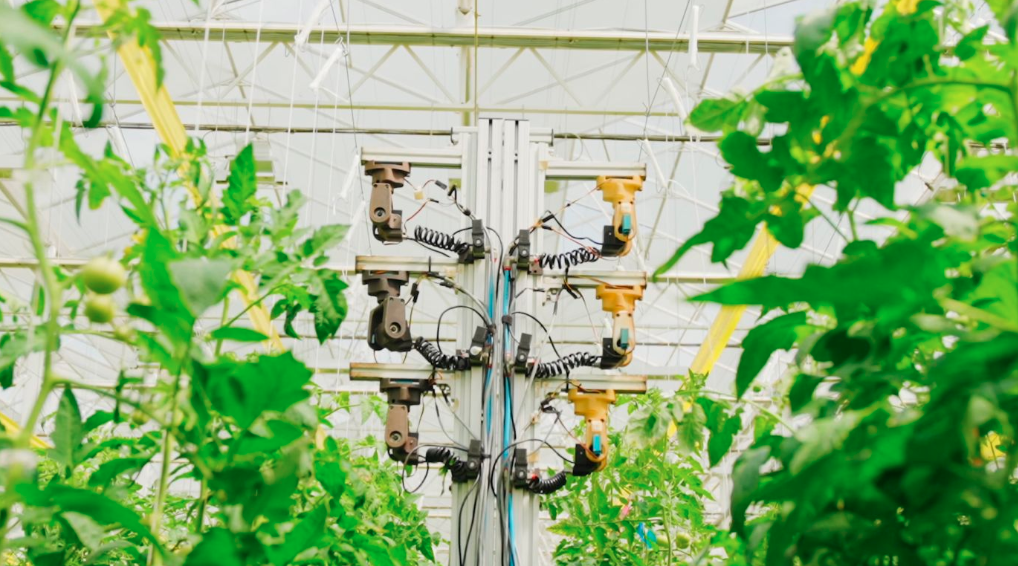How AI is Driving the Future of Food and Agriculture Globally


Farmers face increasing pressure to produce more food while dealing with climate uncertainties and labor shortages. Pests alone destroy up to 40% of crops annually, necessitating a shift towards artificial intelligence (AI)-driven technology to optimize farming practices and improve productivity while conserving resources like energy and water. As the world urbanizes and faces labor shortages, farmers must rely on technology more than ever for successful crop cycles. As a result, the concept of AI now plays a pivotal role in meeting food supply needs.
By harnessing AI technologies, farmers can gather and analyze vast amounts of data from various sources, such as sensors, drones, and satellites, to make informed decisions about crop management, irrigation, and pest control. AI-driven predictive models can optimize planting schedules, monitor crop health, and forecast yield predictions, improving overall efficiency and resource utilization. Additionally, AI-powered robotics and automation assist with tasks like planting, harvesting, and precision spraying, reducing labor costs and enhancing productivity. AI integration in agriculture not only ensures sustainable practices and increased crop yields but also contributes to food security and environmental conservation in the face of global challenges such as climate change and population growth. As a result, global investment in AI in food and agriculture is expected to increase significantly over the next five years, rising from USD 1.7 billion in 2023 to USD 4.7 billion in 2028, an impressive compound annual growth rate (CAGR) of 23.1%, according to Global News Wire.

Source: Tridge, Global News Wire
AI is revolutionizing farming practices, from self-driving tractors and combine harvesters to robot swarms for crop inspection and autonomous sprayers. Self-driving tractors and combine harvesters can autonomously navigate fields and perform precise operations, reducing labor costs and improving overall efficiency. Robot swarms equipped with advanced sensors and cameras can inspect crops for signs of pests or diseases, enabling targeted and efficient pest control measures. Autonomous sprayers can precisely apply pesticides or fertilizers, reducing chemical use and minimizing environmental impacts.
As a result of this rapid growth, there are now approximately 200 AI-based agricultural start-ups in the United States alone. Companies like Plenty and AppHarvest use AI and computer vision in indoor farming to collect data on crops and optimize their environment for better nutrition and flavor while employing robots for harvesting. Through data analysis, these indoor farms can adjust factors such as lighting, humidity, and temperature to create the ideal conditions for crops to thrive, resulting in better nutrition and flavor. Additionally, AI-powered robots are employed for harvesting, ensuring precise and efficient collection of crops.

AI-powered greenhouse (Source: Appharvest)
In Asia, where food security is a pressing issue, AI and data-driven agriculture also play a vital role in helping farmers make informed decisions, boost productivity, and increase harvests. For instance, Indian agricultural start-up BharatAgri leverages satellite imagery to monitor crop health, benefiting thousands of farmers and reducing crop losses. In 2023, more than 50 thousand farmers are expected to receive satellite images of their farms from BharatAgri, reducing crop losses on over 100 thousand acres of farmland in India.
Globally, data-driven agriculture is gaining momentum as one of the most promising approaches to addressing the food security challenge. According to the International Food Policy Research Institute, AI-driven techniques are expected to increase farm productivity by as much as 67% by 2050 while simultaneously cutting down on agricultural and food losses.
However, the high costs of adopting new technologies can also be a barrier for low-to-middle-income countries, particularly for smallholder farmers in rural communities that lack digital infrastructure. To unlock the full potential of AI-driven agriculture, affordable internet connectivity and accessible data collection are crucial. Considering the large number of small and marginal farmers in countries like India, the government and private sector should collaborate in public-private partnerships following the build, own, operate, and transfer (BOOT) model to promote adoption and scale-up the mechanization.
As the autonomous-farming industry continues to grow, AI's role in agriculture will become increasingly transformative, ensuring food security and sustainable farming practices in the face of climate change and labor shortages. However, ensuring equitable access to AI-driven technologies for smallholder farmers in low-to-middle-income countries remains a crucial hurdle to overcome. Through public-private partnerships and investment, AI-driven agriculture can unlock its full potential, transforming the future of food production and nourishing a growing global population.
For further reading, follow the links below:
1. How Agtech is reshaping the world
2. Webinar Recap: Building Agriculture Resilience during Periods of Uncertainty


